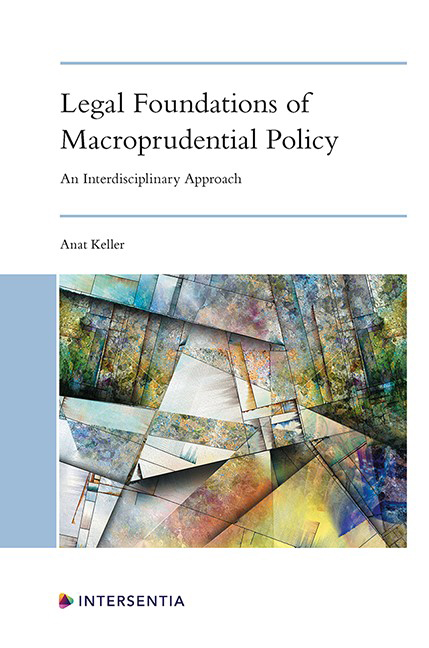Book contents
- Frontmatter
- Dedication
- Contents
- List of Cases
- List of Instruments
- Chapter 1 Introduction and Background
- Chapter 2 A Macroprudential Mandate: How to Operationalise it
- Chapter 3 Institutional and Procedural Design for Macroprudential Regimes: Institutional Models and the Nature of the Decision-Making Process
- Chapter 4 Powers of Macroprudential Authorities and the Use of Soft Law
- Chapter 5 Formulating a Taxonomy of Supervisory Approaches in Macroprudential Policymaking
- Chapter 6 Activating and Calibrating Macroprudential Instruments
- Chapter 7 Independence, Accountability and Transparency of Macroprudential Policy
- Chapter 8 A Non-Dichotomous View of Macroprudential Policy and Other Policy Areas
- Chapter 9 Data Collection and Analysis in Macroprudential Policy: An Epistemic View
- Chapter 10 Th e Global Architecture of Systemic Risk Regulation and Supervision
- Index
- About the Author
Chapter 3 - Institutional and Procedural Design for Macroprudential Regimes: Institutional Models and the Nature of the Decision-Making Process
Published online by Cambridge University Press: 03 October 2020
- Frontmatter
- Dedication
- Contents
- List of Cases
- List of Instruments
- Chapter 1 Introduction and Background
- Chapter 2 A Macroprudential Mandate: How to Operationalise it
- Chapter 3 Institutional and Procedural Design for Macroprudential Regimes: Institutional Models and the Nature of the Decision-Making Process
- Chapter 4 Powers of Macroprudential Authorities and the Use of Soft Law
- Chapter 5 Formulating a Taxonomy of Supervisory Approaches in Macroprudential Policymaking
- Chapter 6 Activating and Calibrating Macroprudential Instruments
- Chapter 7 Independence, Accountability and Transparency of Macroprudential Policy
- Chapter 8 A Non-Dichotomous View of Macroprudential Policy and Other Policy Areas
- Chapter 9 Data Collection and Analysis in Macroprudential Policy: An Epistemic View
- Chapter 10 Th e Global Architecture of Systemic Risk Regulation and Supervision
- Index
- About the Author
Summary
As will be discussed in length in Chapter 7, macroprudential authorities may be subject to strong political pressure and demands from the financial industry and/or the public at large to tone down or even delay the implementation of macroprudential tools. The institutional structure of macroprudential authorities can significantly affect their level of resilience and ability to withstand these pressures and make unpopular policy decisions. As such, where central banks play a central role in macroprudential policymaking, their hard-won and long-standing independence can provide a solid ground to resisting these pressures and lobbying. In contrast, a dominant role of the ministry of finance in a macroprudential committee could potentially inhibit the independence of the committee and may result in a reduced willingness to take pre-emptive measures, for example, to slow expansion. Furthermore, the choice of an institutional structure can exacerbate or alternatively, ameliorate biases in the macroprudential decision-making process, such as inaction bias and groupthink, and thus affect its quality and effectiveness. For instance, as will be discussed in subsequent sections, diversity in the composition of a macroprudential committee via inclusion of external members can act as an antidote to groupthink in the macroprudential decision-making process.
The choice of a particular institutional model may foster (or alternatively, inhibit) the much-needed coordination and flow of information between macroprudential policy and other policy areas. More specifically, where the institutional setting is founded on cross-membership and representation of other policy areas, coordination will be ingrained in the macroprudential decision-making process and exploit synergies across these policies. Conversely, an institutional model that does not acknowledge these interlinks may result in a confined, insular and perhaps even entrenched decision-making process and further deepen potential trade-off s and conflicts between macroprudential policy and other policy areas. Nevertheless, the significance of institutional models and their impact on the effectiveness of macroprudential authorities in achieving their mandate present two limitations. First, and a recurrent theme in this book, the design and conduct of macroprudential policy cannot follow a one-size-fits-all approach. Governance is no exception as evident from the considerable differences in macroprudential institutional settings across countries. Therefore, a “ right “ , “ wrong “ or superior structure cannot be identified and will differ in accordance with local conditions and the environment within which the macroprudential authority operates in, including existing institutional arrangements.
- Type
- Chapter
- Information
- Legal Foundations of Macroprudential PolicyAn Interdisciplinary Approach, pp. 53 - 82Publisher: IntersentiaPrint publication year: 2020



